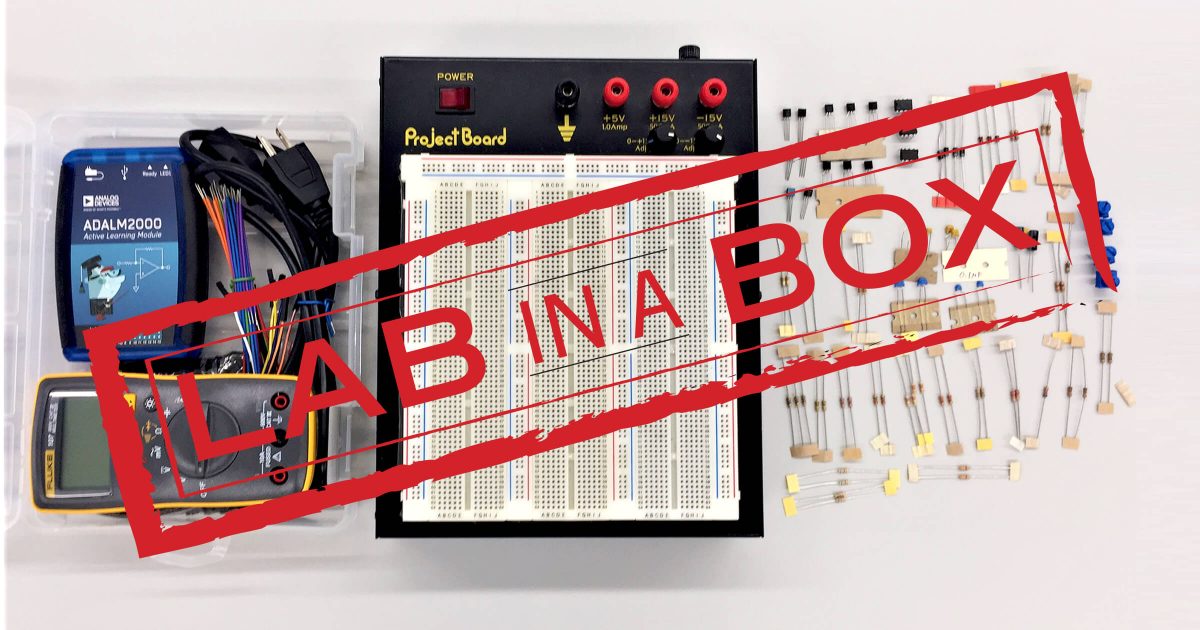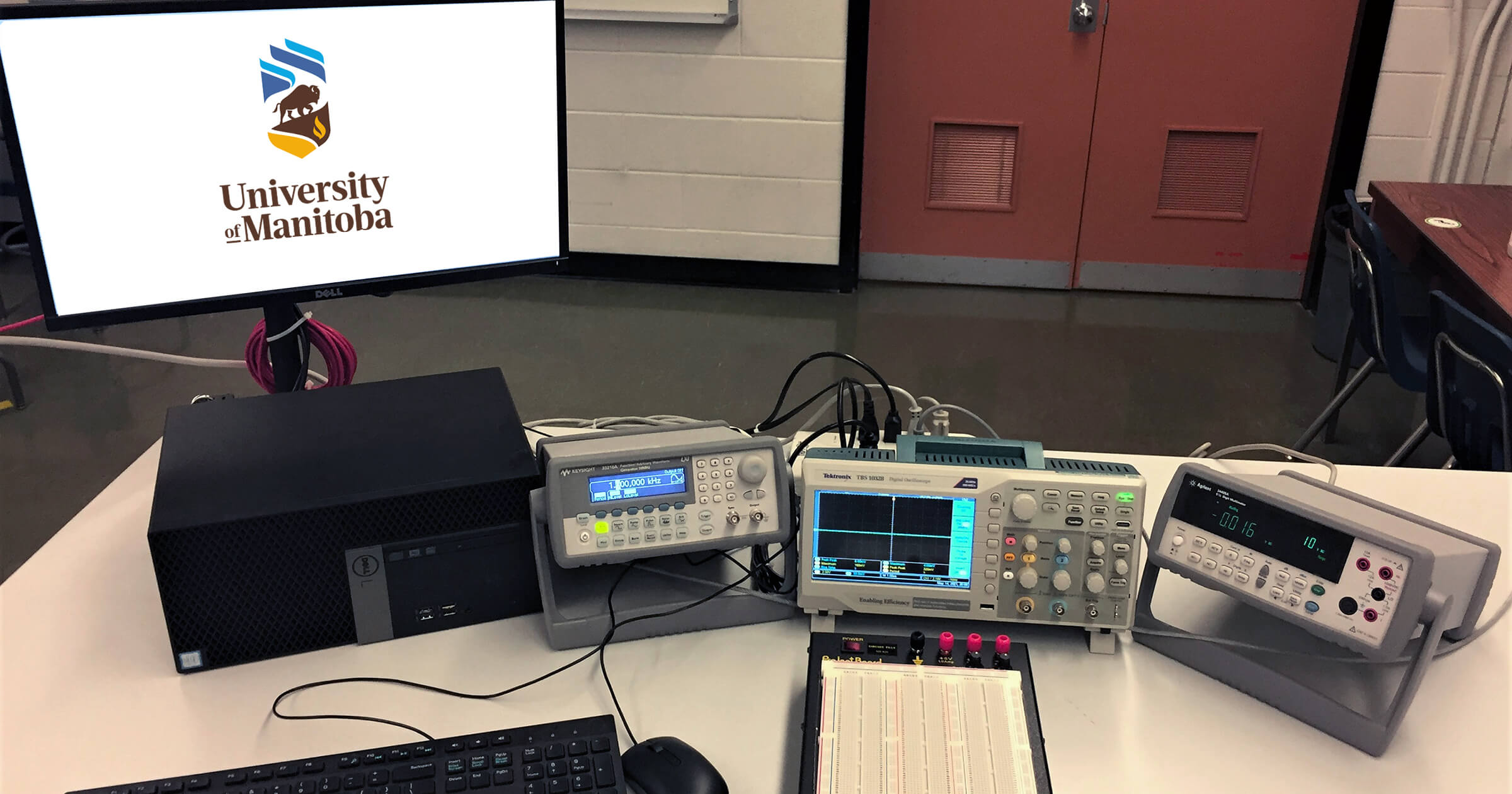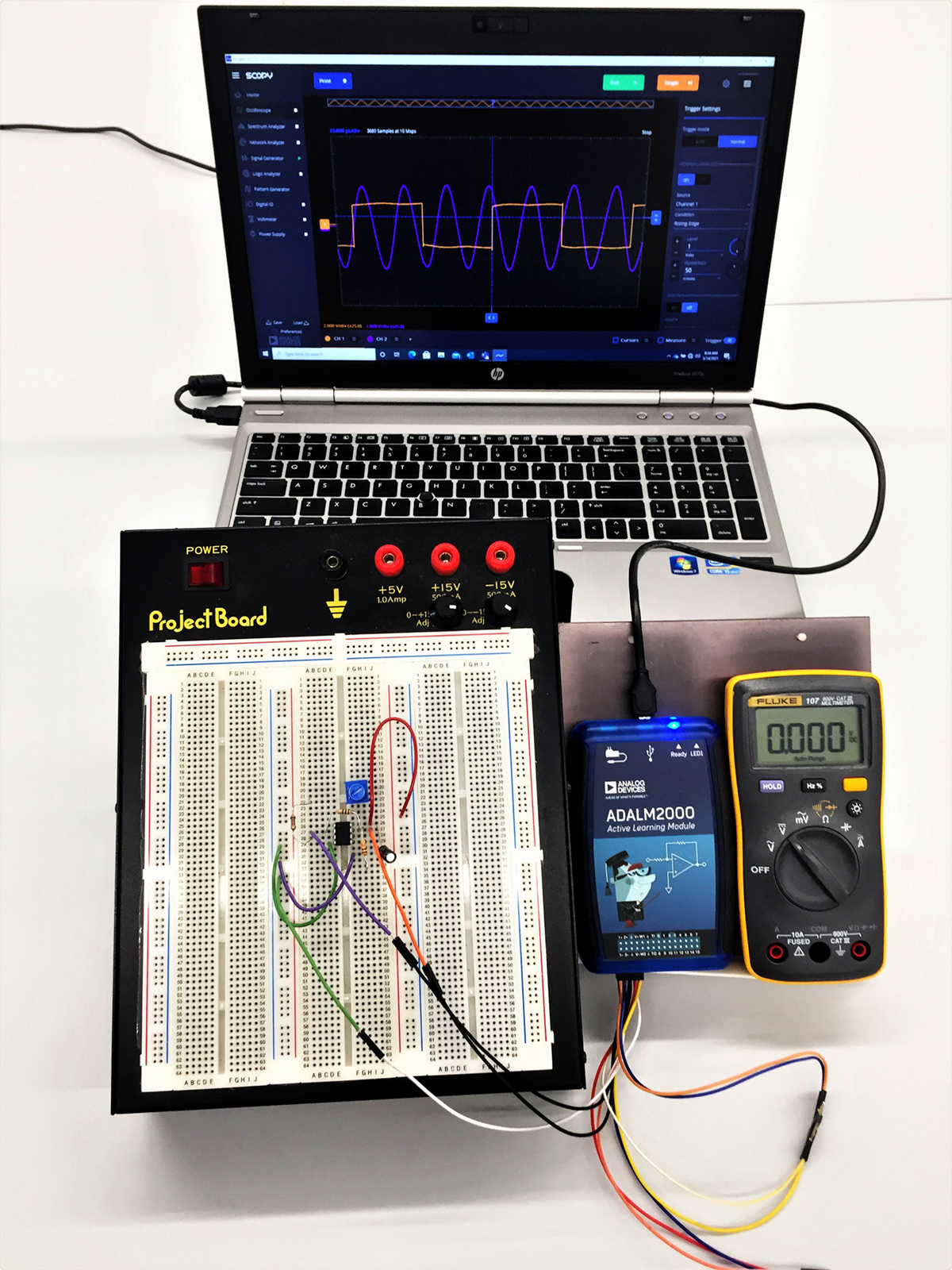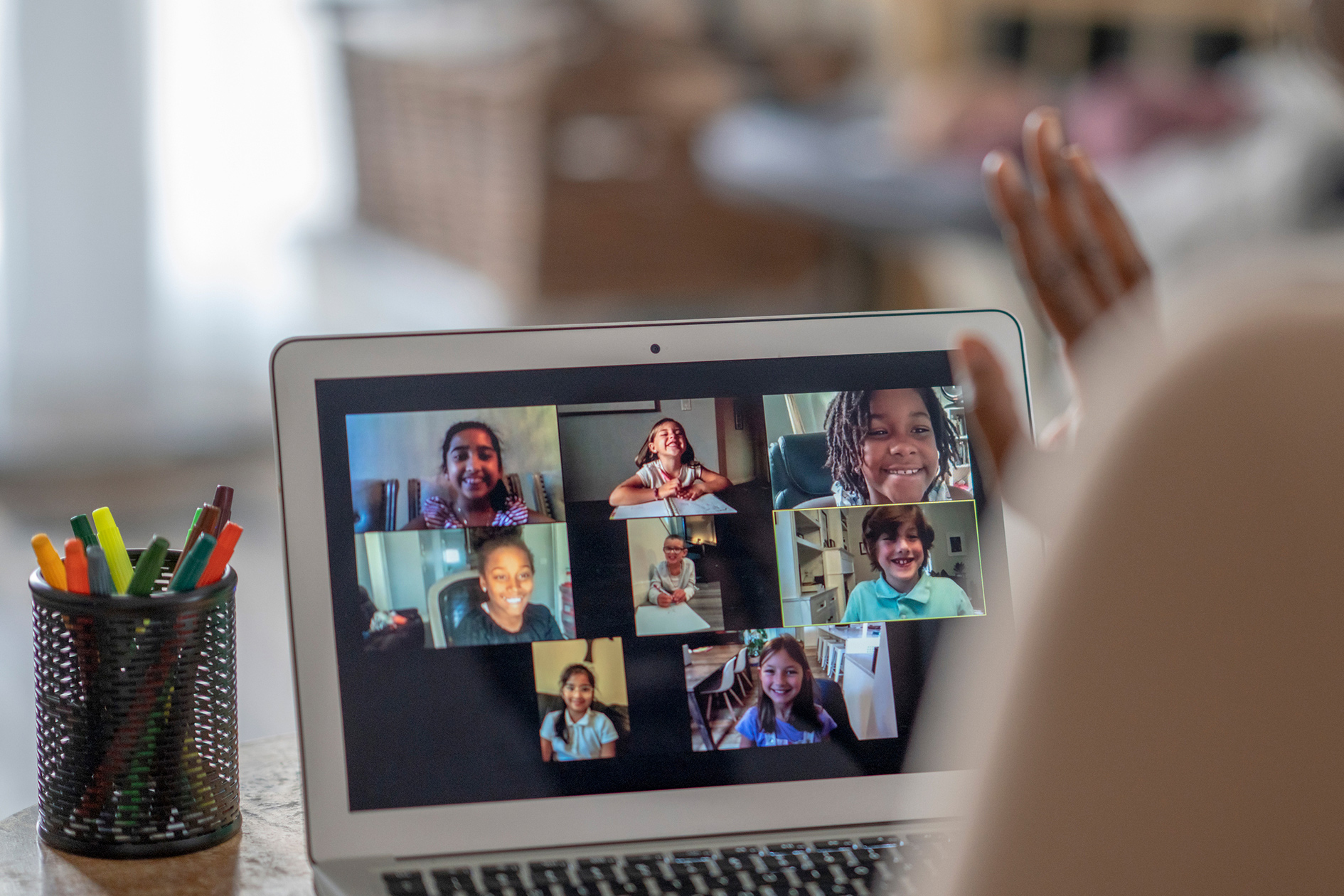
A portable lab kit that is distributed to every student taking electronics labs so they can perform labs at home during the pandemic. It includes a powered project board, hand-held digital multi-meter, electronic components, ADALM2000 (replaces the waveform generator and oscilloscope when used with a laptop or desktop computer).
Thinking inside the box
Growing up in rural Manitoba, Grace Capar always wanted to know how the equipment around her–things like snowmobiles and tractors–worked. Today, she’s in her final year of mechanical engineering, and manager of the UM Innovative Design for Engineering Applications (UMIDEA) program, which partners with local engineering companies to develop projects with graduating engineering students.
Capar admits that being an engineering student during the COVID-19 pandemic was challenging. But it also had its silver linings. One was the laboratory for solid mechanics taught by Sean O’Brien, associate head, undergraduate program, department of mechanical engineering at the Price Faculty of Engineering.
“Courses like O’Brien’s have pushed us to be more deliberate and self-disciplined about learning,” explains Capar. “I think there’s a lot that has come out of it in terms of self-growth.”
Instead of working in an engineering lab on campus, students conducted their experiments from home using a kind of “lab-in-a-box.”
According to O’Brien, “During the pandemic, many course instructors were faced with the challenge of adapting labs to suit the remote learning environment. I chose a project that could easily be done at home, while meeting all the learning outcomes. We made sure all the materials for the lab were readily available and affordable, and that the experimental setup at home didn’t need to be perfectly precise to work.”

A typical bench setup that would be used in person at UM in electronics labs under normal conditions: a computer and monitor, waveform generator, oscilloscope, powered project board, bench top digital multi-meter.
“We made sure all the materials for the lab were readily available and affordable, and that the experimental setup at home didn’t need to be perfectly precise to work.”
In the first step of the experiment, each group of five students was required to take a foam board and cut it into a horseshoe about one foot long. They then applied increasing loads onto it using a water-filled milk jug, and evaluated the resulting stress and deformation.
In the second step, groups were asked to see how much volume they could remove from the horseshoe while still withstanding a load of 7N–about the weight of a pineapple. The design that could support the load using the smallest volume was awarded the best design prize.
For Capar, one of the biggest challenges was that they needed to work as a team, but each member was isolated at home. “Although we regularly got together virtually, it was hard to change up roles. Whoever had the horseshoe did the hand calculations, while another did the computer simulation, and so on.”
While Capar’s group didn’t win the design prize, she believes the experience was well worth it. “Our experience was more like what would be typically found in industry. I enjoyed being able to follow the engineering process from start to finish, from the background research to the random loading, and trying the latest software to perform the analysis.
“I also liked that we had more time to try things out and make mistakes,” she adds. “Before, when we were at school, we would have a specific lab slot assigned and need to be out at a certain time.”
O’Brien conducted a student survey, and the results echoed Capar’s positive experience with the at-home lab process.

The typical setup of the at-home lab kit in use with a laptop computer. The ADALM2000 interfaces with the software on the laptop computer to allow students to generate signals and make measurements of the lab circuits which provide real-time data to compare with the simulation data set.
“Many students indicated that they came out of the course with a much greater level of confidence in their own abilities, compared to the traditional lab setting with a teaching assistant available to guide them through the experiment,” explains O’Brien.
Capar concurs. “It encouraged us to learn for ourselves.”
The department of electrical and computer engineering professors have also moved nearly half their courses into the “lab-in-a-box” format, with technical support staff collating and distributing the kits.
In June, O’Brien will be presenting at the 2021 Canadian Engineering Education Association (CCEA) about what can be learned from this hands-on, at-home approach, and how its benefits can be transferred to in-person, on-campus labs as well.
“This experience showed me the importance of giving students greater responsibility for their own learning,” says O’Brien. “They knew that the experiment’s success was fully within their own hands and, as a result, they developed a deeper understanding and pride in their own work.
“This experience showed me the importance of giving students greater responsibility for their own learning. They knew that the experiment’s success was fully within their own hands and, as a result, they developed a deeper understanding and pride in their own work.”
“When we return to in-person learning, students will have access to more exciting manufacturing methods, such as laser cutting and 3D printing,” O’Brien adds. “But this time, teaching assistants will act more like mentors, and we’ll make sure students have full responsibility for the success of their labs.”
The department of electrical and computer engineering moved nearly half of its courses into a lab-in-a-box format following the immediate move to remote learning in the spring of 2020. The system, although it had some challenges, was effective and allowed students to grow in a more immersive and experiential environment.
The kits that were developed almost immediately following the initial pivot to remote learning were the products of many extra hours from dedicated Faculty technicians, teaching assistants, and instructional staff. The student experience was paramount in their eyes. The lab kits ensured students would still be submerged in an experiential learning environment. Additional teaching assistants were hired for large classes of 80 to 100 where students were subdivided into smaller groups to provide help and troubleshooting for students. Read more about the initiative.
TeachingLIFE
UM is where teaching, learning and research collide to create an outstanding educational experience. TeachingLIFE tells the stories of our innovative educators and their impact on student success.
Learn more about TeachingLIFEOther TeachingLIFE articles
About CATL
The Centre for the Advancement of Teacching and Learning is an academic support unit that provides leadership and expertise in furthering the mission of teaching and learning at the University of Manitoba.
Learn more about CATL










